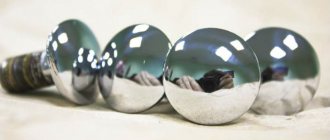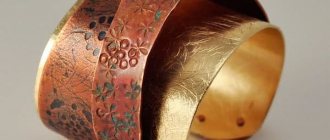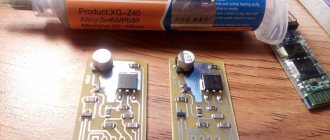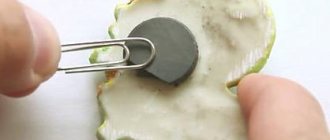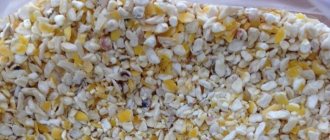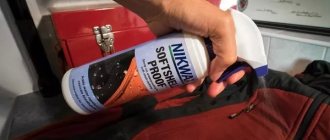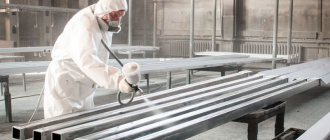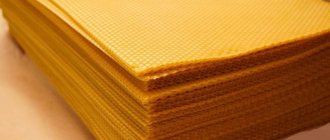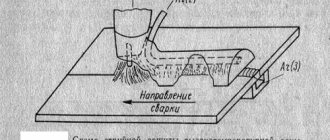The history of sparklers goes back to ancient India. It was in Bengal, as historians testify, in the 5th-6th centuries. n. e. During religious ceremonies in temples, a fire of unusual brightness flared up on the altars and quickly burned out. At the same time, depending on the wishes of the clergy and the type of ceremony, “it smelled of evil” (probably the composition contained sulfur powder, which when burned forms sulfur dioxide), or “blessed breath” was spread throughout the temple (probably in this case, instead of sulfur, rosin was used in the composition of the sparkler ).
The high efficiency of the action due to the people’s deification of fire and light stimulated the rapid development of the use of fiery compositions and the improvement of their recipes by clergy. By the beginning of the 8th century, the compositions of colored fire were already known - blue, green, yellow. Methods have emerged to lengthen the burning time. To do this, the sparkler composition was filled with hollow, dry plant stems and tubes twisted from dried, wide leaves. These first sparklers not only produced a bright flame, but their burning was also accompanied by a characteristic crackling sound.
In the folk life of the Eastern Slavs, around the same years, “fire fun” took place, which was organized using a club moss. Moss moss or lycopodium, a creeping evergreen herbaceous plant that appears to be moss. Its mature dry spores, when ignited, produce an instant lightning-like flash without smoke. The flame of a moss is amazing and very fun to watch, especially when thrown at night or in the dark. To make a loud noise, add dried and powdered birch leaves.
It was in Europe (according to the Spanish researcher Bertrano Luengo - in Valencia) that Bengal torches and indoor compositions first appeared. The next stage on the way to today's Bengal candles, which are familiar to us, was the appearance of sparkling fire recipes in the 6-7 centuries. The effect was achieved by adding iron scale, crushed cast iron, and later magnesium powder to the flaming compositions of the sparkler.
Thus, the sparkler developed in two directions - as flaming and as sparkling.
Flame compositions are usually packed in paper sleeves, sparkling ones are applied in several layers to wooden sticks or metal wire. Russian pyrotechnician Professor Petrov recommended for making flaming sparklers “sleeves made of 3-turn writing paper, 20 mm in cross-section and 35 cm in length. They put 5 cm of clay into the sleeve and then fill it with the fiery composition of a sparkler, lightly tamping it down...” Such a candle burns out along with the sleeve, so it is not possible to hold it in your hands. However, these candles, fixed along the contour of the pattern, give a wonderful “fiery picture” due to their even, bright flame. If, when making a sleeve, we wind it on a wooden stick 5-7 cm in length, then we will get a flaming sparkler candle that is convenient to hold in our hands. These products have survived virtually unchanged to this day. The main manufacturers of such candles are China, India, and Japan.
The modern name of these products is triumphal candles.
The products are practically smokeless and can be successfully used indoors. At the same time, both individual candles and combined table toys are produced. This is a tabletop figure made up of three or more candles placed in a stand and the upper part pulled together in a tense state. When the product is set on fire, the candles expand and form a multi-beam burning composition.
Bengal torches are quite popular, especially in Europe. The products are available in different colors (red, green, blue, white, yellow), different sizes (length from 20 cm to 100 cm), and for different purposes (outdoor and low-smoke indoor). Bengal torches were an indispensable attribute of all fireworks shows in the 18th and 19th centuries. They were used to set fire to products and in all situations where it was necessary to suddenly illuminate a large area of the stage or decorations with colored light.
Bengal candles, or sparklers, are a very popular, beloved, and relatively safe type of pyrotechnics. So safe that even children are allowed to set sparklers on fire (of course, under the supervision of their parents). From the point of view of the device, a Bengal candle is a piece of metal wire on which a pyrotechnic composition is applied. The effect of splashing lights is created, on the one hand, by oxidized filings - iron or steel; as well as powdered magnesium or aluminum. Sparklers can come in a variety of colors - with additional chemical ingredients added - such as purple, blue or pink. But classic sparklers are still a golden hissing stick that scatters sparks that look like molten metal (in fact, that’s what it is).
Despite the ease of use, sparklers also have safety precautions. Having taken the begnal out of the packaging, hold it by the metal end (without sprayed pyrochemical composition), under low heat, towards the ground, so that the sparks fall evenly and scatter in different directions. Under no circumstances should you hold a sparkler vertically, because... Flaming particles of metal filings can fall on your hand and cause a burn. Carefully light the far end of the candle.
Sparklers are a flammable product and are recommended to be lit outdoors. This condition becomes mandatory if we are talking about color-flame sparklers, because... they contain aggressive oxidizing agents.
Before lighting, carefully inspect the surface of the candle. It should be fairly smooth, with the composition evenly applied. If there are chips or the composition is falling off in some places, you should refrain from lighting such a candle - most likely, it is expired. You don’t want falling pieces of the composition to fall on your clothes or shoes during a fire?
A high-quality sparkler candle has a silver, gray or black color, depending on the composition used in its manufacture. Some factories apply a special flammable head (almost like the head of a match) to the end of the candle to make it easier to light. Almost all sparklers on sale are made in Russia. There are a lot of factories that produce such pyrotechnics, among them we can highlight NIIPH (Sergiev Posad) and TSZ (Troitsky Equipment Plant), which is part of the Russian Fireworks association. Chinese Bengals are distributed mainly in Siberia and the Far East.
Bright and unusually beautiful, bringing some piece of joy to all those who see them, but they occur approximately once a year - yes, these are sparklers. Has anyone ever wondered why sparklers are called that?
Origin of sparklers
From books and ancient writings it is known that sparklers begin their history at the beginning of the fifth century AD. In those distant times, the professed religion required regularly appeasing the gods in order to gain their favor. When making sacrifices to the gods, the ancient priests of India often used mysterious luminous lights in their rituals and ceremonies. Why did the lights become sparklers?
Historians claim that it was in the northeast of India, in a region called “Bengal,” that the first sparklers were invented and these were the same mysterious lights that Indians used in their temples. Actually, the city of origin gave us the name “Sparklers”.
Of course, modern sparklers are strikingly different from what the sparklers invented and burned. With the development of science (in this case chemistry), people have discovered many chemical substances that can ignite and burn with all the colors of the rainbow, completely capturing the attention of their observers.
For more than three hundred years, no one knew the secret composition of sparklers, and only at the beginning of the eighth century was it discovered. We also managed to extend the burning time of the sparkler and, using various additives, decorate the flame in any color.
Composition of sparklers
The compositions of sparklers have long been invented and tested, and the reagents are relatively accessible. I will provide you with the compositions of sparklers from the book by the author Platov:
Composition No. 1
Barium nitrate…………………………….50% Aluminum powder………………….6-8%
Composition No. 2
Barium nitrate…………………………….50% Dextrin……………………………..12-14% PAM No. 4…………………………… ………..6-8% Burnished cast iron sawdust……30%
Composition No. 3
Barium nitrate…………………………….50% Dextrin……………………………12-14% Magnesium powder No. 4………….6-8% Steel filings blued……30%
(PAM – Aluminum-Magnesium Powder)
As you can see, all compositions do not contain sulfur and salts (sodium, potassium), due to which the composition does not emit smoke or substances harmful to the body.
Unfortunately, I do not have access to Barium Nitrate (which in most cases can only be purchased in chemical stores), so I will describe to you another composition and method of making sparklers that can be safely used outdoors, just like factory-made products.
The simple composition of a sparkler is as follows:
Aluminum gunpowder – 5g Dextrin – 2g Cast iron filings – 5-6g
The specified quantity is enough for 6-8 pieces.
Aluminum gunpowder was used in the proportion for pyro products - 50:15:35. This is the main flammable composition that will produce a bright white fire. Gunpowder contains sulfur, which will produce smoke when burned, so sparklers with this composition can only be used in fresh air. I used a homemade one, it binds our composition, ensures good fastening to the wire, and reduces the burning rate of al. gunpowder
Crushed cast iron filings were also used to create flying sparks. They should be medium grain, not powder!
Instead of cast iron filings, you can also use iron, titanium, steel, and possibly aluminum.
From the dishes, we will need a small container for mixing the composition and a tall narrow vessel, preferably a glass flask, but you can also use an empty thick marker.
How did sparklers spread around the world?
As soon as Europe concluded a trade agreement with India, the sparkling spectacle first came to the markets of Spain, namely to the largest trading city of that time, Valencia, where the wonderful lights completely captured the attention of both kings and ordinary citizens.
Soon, China, Japan and America gained access to sparklers, where they immediately won hearts and gained enormous popularity among people of different social statuses. Later, the Slavic peoples saw magical sparkling lights. Today, few people know, but sparklers also have a second name - “Triumphal candles.” But it didn’t catch on among the people.
Tips for Using Sparklers at a Wedding
If you've been considering wedding fireworks and decided to buy large sparklers for your celebration, then we offer you some tips on how to avoid mistakes when organizing your event so that everything goes according to plan. To do this, we recommend doing the following:
- First of all, of course, take precautions. Find out whether it is possible to use such sparklers at the celebration site and discuss all the nuances with the administration of the establishment. Not all restaurants allow this, and you can be very disappointed when you decide to turn on the lights and the waiters tell you that you can't do it.
- Warn guests in advance that you plan to use sparklers.
- To realize your idea, you should choose a spacious place, at a safe distance from furniture and flammable objects.
- If you only need lights for an event and don’t plan to use them anywhere else, then you don’t need to buy a lot at once. It will be enough to purchase 1 light per guest, and sometimes ⅔ is enough.
- Provide matches or other means of igniting the fire. We recommend presenting your guests with matches with thoughtful, original box designs.
- Check in advance that the sparklers are lit well, and also note the time of their smoldering in order to plan when the newlyweds need to go out, and coordinate this with the host.
- Be sure to provide a place for guests to put used chopsticks.
Sparklers at a wedding are the most unusual and magical ending to the holiday. An excellent tool for a colorful, original photo shoot, as well as the best way to leave this event in the memory of guests for a long time. Therefore, if you are wondering how to make your wedding unforgettable, then change it to where to buy sparklers for a spectacular show.
Production of sparklers
Sparklers are now mainly produced in China. The country annually produces hundreds of thousands of tons of various pyrotechnics, including all kinds of sparklers, which can have different chemical formulas and compositions.
Here is just a small part of the elements from which a modern sparkler can be made: barium nitrite, dextrin, magnesium powder, steel or cast iron filings, gunpowder, etc. It’s interesting that by using the right proportions and combining the right components, you can get a full-fledged sparkler at home. The main thing is to strictly adhere to the instructions and not to forget about safety precautions.
Today, not a single New Year is complete without all kinds of firecrackers, streamers, firecrackers, fireworks and, of course, sparklers. Moreover, sparklers are one of the most accessible spectacles that bring an atmosphere of joy to the house and allow anyone, even the poorest family, to enjoy it.
Not a single New Year or Christmas goes by without the lighting of beautiful and bright sparklers, scattering shining sparkles around them, as if by magic. But few people think about how such “stars” are made and where they came from. But you can even make sparkler candles yourself!
How to choose sparklers?
The first issue to consider is the choice of products. Of course, many are accustomed to the fact that there are ordinary sparklers, small and slightly larger, which almost everyone buys on New Year's Eve. They help create a festive atmosphere, both with their combustion and with a rather specific smell, which many people associate from childhood with some kind of magic, celebration and fairy tale.
But, still, there are some features of choice when it comes to organizing a wedding. Here it is worth considering the following points:
- A type of sparklers. They can be presented in the form of ordinary sticks, as we are all accustomed to seeing them, as well as figured ones, and here the variety is simply amazing. These can be letters, shapes of hearts, stars, and much more.
- Size. Oddly enough, he also deserves special attention. Today you can see a large assortment of sparklers of different sizes. They can reach lengths from 10 to 100 centimeters, and some manufacturers make longer products. It is worth choosing the length depending on the location of the celebration, the required smoldering time and the number of guests. The most popular products are 60 cm in size.
- The thickness of the candle. If you want the lights to burn for a long time, and also to be as bright as possible, then you should select products that are at least 5 mm thick.
And, of course, we recommend consulting with experts regarding how much sparklers sparkle, since this beauty should be enough for you to dance, or for a certain part of it, or maybe for another activity altogether. Therefore, every little detail must be taken into account here.
A little about the history of sparklers
The history of the first sparklers goes back centuries and is lost in the wilds of ancient India. Scientists generally believe that the first chemical experiments with flashing bright fire were carried out for religious purposes on the altars of Bengal back in the 5th century AD. e. It is known that to achieve the magical effect of a “sparkler”, clergy threw pre-mixed mixtures containing, among other things, sulfur or rosin, into the altar. When caught in a flame, such a mixture began to burn brightly and sparkle, scattering into stars. Then, as history says, sparklers appeared in the Far East, from there they moved to Valencia and Spain, and then spread throughout Europe.
What and how are sparklers made from?
To begin with, it should be noted that there are two types of sparklers:
- fiery;
- sparkling.
The production of now rare flaming sparklers was carried out by the Russian scientist and pyrotechnician Professor Petrov. The main difference between flaming lights and the well-known sparkling lights is that the chemical composition was placed in a paper sleeve, and not applied to a stick. In addition, clay plugs were made in the sleeve, and the candle burned out completely, so it was impossible to hold it in your hands. But at the same time, it gave a bright, strong and even flame, so that if you put it on a holder, you got a convenient lantern or torch.
In modern pyrotechnics, only sparkling sparklers are used. The advantages of such products are obvious:
- thanks to the cold combustion temperature, you can light fires not only on the street, but also in the apartment, and you can hold them in your hands;
- when sparks hit furnishings, they do not cause harm and do not cause fire;
- sparklers do not emit ammonia and do not smoke;
- When burning, the candle scatters beautiful sparks that shine with a golden or silver hue.
So what are sparklers made from? First, a metal rod is prepared, onto which the pyrotechnic composition will then be applied. Basically, ordinary iron wire is used, which is cut into pieces of a standard length for lights. The sparkler recipe will be impossible to replicate without knowing how to mix the flammable composition. Each ingredient is carefully measured and poured in a specific order. For example, if you don’t add enough iron to the mixture according to the recipe, the candle will burn without beautiful scattering sparks.
The simplest pyrotechnic mixture for sparklers consists of the following components:
- iron filings;
- aluminum powder;
- magnesium powder;
- potassium chlorate;
- salt.
When these substances combine, white fire is formed. If it is necessary to give it a tint, then additionally add starch with water, boiled into a paste. To get a green tint, barium nitrate is added, for red, strontium nitrate is needed, and for yellow, sodium oxalate is needed. For multi-colored combustion of sparklers, you will have to mix the cations of strontium, sodium, barium, boron, iron, aluminum and magnesium. The reaction formula for such sparklers can be written as follows:
After the mixture is ready for use, it is applied to the rod in a certain proportion. Excess is cut off, irregularities are smoothed out. Next, the workpieces are sent for drying. Bengal candles will be ready only after a day of being in a dry and warm room. If the room temperature is below 25°C, then drying of the pyrotechnic substance will take up to a week. If you light candles with a wet composition, they will not burn and the product will simply be damaged. In addition, for combustion it is necessary to apply a flammable substance to completely dry candles so that the sparklers flare up immediately upon contact with the fire. After this, the products are sent back to drying. After a period of time, from 1 to 3 days depending on the temperature conditions in the room, the lights can be packaged and packaged for further storage.
Composition of modern sparklers
Factory-made “sparklers” are made on a base of twisted wire. This frame is coated with a thin layer of flammable pyrotechnic mixture, the main ingredients of which are:
- iron filings: aluminum or magnesium powder;
- Potassium chlorate (Berthollet's salt).
This mixture produces the usual white fire, but you can make colored sparklers yourself.
Colored sparklers
To create colored sparklers, you must first brew a thick paste: mix starch with water until smooth. In further mixing of metal powders, it is important to use moistened potassium chlorate , otherwise, when grinding dry Berthollet salt with aluminum and magnesium, spontaneous ignition of the mixture may occur.
Red sparkler
Then everything is quite simple: the resulting mixture is mixed with paste in a convenient tall vessel, and the wire blanks are dipped into it one by one. The excess mass drains off, and the resulting homemade sparklers are dried naturally in a suspended state. The procedure is repeated 3-5 times, the total volume of the finished “stick” in diameter should be 5-6 mm.
To obtain the desired color , add to the described mixture:
- green – barium nitrate or boric acid;
- red – strontium nitrate;
- yellow – sodium oxalate.
The proportions of ingredients for each mixture are different and must be strictly observed.
How to make sparklers at home?
If you have free time and desire, making a sparkler with your own hands is not so difficult. You just need to allocate a place in the house where you can freely mix the pyrotechnic composition so that children or pets do not get to it. In addition, if the proportions are incorrect, the mixture may ignite, so it is advisable to make sparklers at home in outbuildings.
How to make sparklers? First you need to get aluminum gunpowder, dextrin and medium-grain cast iron (or titanium, steel, aluminum, iron) filings. To mix the composition of the sparklers, you will need an open square or rectangular container and a glass flask. You also need to remember to prepare metal rods made of wire up to 15 cm long. Since sparklers are made at home, it will be easiest to dry them by hanging them. This means that it is necessary to bend a hook on the rods on one side.
5 grams of gunpowder, 2 grams of dextrin and 5 grams of shavings are poured into the container. After stirring, the mixture is poured into the flask and alcohol is added, the consistency should be quite thick. Now you can dip the rod into the flask. After which the rod is hung by the hook to dry on a pre-stretched rope. 15-20 minutes are enough for the mixture to dry and you can dip the workpiece into the flask again. Thus, 5 layers are made, after which the future sparkler is hung for final drying, which, depending on the temperature, can last from 1 to 7 days.
Invented many centuries ago by the inhabitants of ancient India. One of the parts of the country is Bengal - a place on the coast of the bay of the same name, which is why these small fireworks are called Bengal. These are thin wire sticks on which a mixture of chemical elements is applied, which, when burned, produce a peculiar crackling sound and bright colored flashes.
Nowadays, such safe and beautiful lights are widely used all over the world at festivals, weddings, anniversaries, and sparklers are especially often purchased before the New Year. It’s safe to light them even at home, you can let your children admire such beauty, they are incredibly happy at such moments.
Of course, the easiest way to buy such fun is in a store or market, but for those who like chemical experiments, we will tell you in this article how to make a sparkler at home.
How to make a sparkler
And so, everything is simple: 1. You already have aluminum gunpowder ready, pour 5g into a container, pour 2g of dry dextrin into it, mix well, then 5-6g of metal filings. Cast iron ones produce the most beautiful, branching yellow sparks. Aluminum and titanium produce white sparks.
2. First you need to prepare steel (!) pieces of wire 12-15 cm long, 1 mm thick, and make bent hooks on all of them at one end. The wire must be steel, and not copper or aluminum, because the combustion temperature of al is high. gunpowder can literally melt and burn it.
3. Now pour the composition into the flask and add a little solvent (water or alcohol) to the consistency of condensed milk, mix.
(The composition is then very easily washed off with water from any dishes and hands.)
4. At the next stage, we need to soak and coat the wire in a liquid composition (if there is little composition and it is all at the bottom, then simply turn the flask horizontally so that the composition sticks to the desired piece of wire - about 8-10 cm.) Shake off excess mass (droplets) into the flask so that they don’t drip onto the floor later.
5. There should be 5 layers in total, after the first layer the wire will only thicken a little, this is a primer, so to speak... Then we hang it by the hooks, dry it on a rope for about 15 minutes.
Cover the flask with a lid during this time so that the water does not evaporate and the composition does not dry out.
This is what it looks like after the 3rd layer:
Hang to dry again for 20-30 minutes, during which time you can go about your business.
These are ready-made and dried sparklers after 5 layers of composition:
It’s not as smooth and beautiful as from the packaging, but we don’t need that, we’re not at the factory.
That's all, these sparklers are easy to light and burn beautifully:
Attention! So that there are no questions. This was the first time I made this composition and only added 3g of cast iron filings, which is why there were so few sparks. There wasn't enough dextrin for the second portion. Therefore, do everything as indicated in the proportion, put 6g of sawdust (in terms of volume it will be a very small pile) and you will have enough sparks, like in real fires.
The history of sparklers goes back to ancient India. It was in Bengal, as historians testify, in the 5th-6th centuries. n. e. During religious ceremonies in temples, a fire of unusual brightness flared up on the altars and quickly burned out. At the same time, depending on the wishes of the clergy and the type of ceremony, “it smelled of evil” (probably the composition contained sulfur powder, which when burned forms sulfur dioxide), or “blessed breath” was spread throughout the temple (probably in this case, instead of sulfur, rosin was used in the composition of the sparkler ).
The high efficiency of the action due to the people’s deification of fire and light stimulated the rapid development of the use of fiery compositions and the improvement of their recipes by clergy. By the beginning of the 8th century, the compositions of colored fire were already known - blue, green, yellow. Methods have emerged to lengthen the burning time. To do this, the sparkler composition was filled with hollow, dry plant stems and tubes twisted from dried, wide leaves. These first sparklers not only produced a bright flame, but their burning was also accompanied by a characteristic crackling sound.
In the folk life of the Eastern Slavs, around the same years, “fire fun” took place, which was organized using a club moss. Moss moss or lycopodium, a creeping evergreen herbaceous plant that appears to be moss. Its mature dry spores, when ignited, produce an instant lightning-like flash without smoke. The flame of a moss is amazing and very fun to watch, especially when thrown at night or in the dark. To make a loud noise, add dried and powdered birch leaves.
It was in Europe (according to the Spanish researcher Bertrano Luengo - in Valencia) that Bengal torches and indoor compositions first appeared. The next stage on the way to today's Bengal candles, which are familiar to us, was the appearance of sparkling fire recipes in the 6-7 centuries. The effect was achieved by adding iron scale, crushed cast iron, and later magnesium powder to the flaming compositions of the sparkler.
Thus, the sparkler developed in two directions - as flaming and as sparkling.
Flame compositions are usually packed in paper sleeves, sparkling ones are applied in several layers to wooden sticks or metal wire. Russian pyrotechnician Professor Petrov recommended for making flaming sparklers “sleeves made of 3-turn writing paper, 20 mm in cross-section and 35 cm in length. They put 5 cm of clay into the sleeve and then fill it with the fiery composition of a sparkler, lightly tamping it down...” Such a candle burns out along with the sleeve, so it is not possible to hold it in your hands. However, these candles, fixed along the contour of the pattern, give a wonderful “fiery picture” due to their even, bright flame. If, when making a sleeve, we wind it on a wooden stick 5-7 cm in length, then we will get a flaming sparkler candle that is convenient to hold in our hands. These products have survived virtually unchanged to this day. The main manufacturers of such candles are China, India, and Japan.
The modern name of these products is triumphal candles.
The products are practically smokeless and can be successfully used indoors. At the same time, both individual candles and combined table toys are produced. This is a tabletop figure made up of three or more candles placed in a stand and the upper part pulled together in a tense state. When the product is set on fire, the candles expand and form a multi-beam burning composition.
Bengal torches are quite popular, especially in Europe. The products are available in different colors (red, green, blue, white, yellow), different sizes (length from 20 cm to 100 cm), and for different purposes (outdoor and low-smoke indoor). Bengal torches were an indispensable attribute of all fireworks shows in the 18th and 19th centuries. They were used to set fire to products and in all situations where it was necessary to suddenly illuminate a large area of the stage or decorations with colored light.
The history of sparklers goes back to ancient India. precisely in Bengal in the 5th-6th centuries. n. e. During religious ceremonies in temples, a fire of unusual brightness flared up on the altars and quickly burned out. at the same time, depending on the wishes of the clergy and the type of ceremony, “it smelled of evil” (probably the composition contained sulfur powder, which when burned forms sulfur dioxide), or “blessed breath” was spread throughout the temple (probably in this case, instead of sulfur, rosin was used in the composition of the sparkler ). the high efficiency of the action due to the people’s deification of fire and light stimulated the rapid development of the use of fiery compositions and the improvement of their recipes by clergy. By the beginning of the 8th century, the compositions of colored fire were already known - blue, green, yellow. Methods have emerged to lengthen the burning time. For this purpose, the sparkler composition was filled with hollow, dry plant stems and tubes twisted from dried, wide leaves. These first sparklers not only produced a bright flame, but their burning was also accompanied by a characteristic crackling sound. In the folk life of the Eastern Slavs, around the same years, “fire fun” took place, which was organized using the club moss. clubmoss or lycopodium, an evergreen herbaceous plant creeping along the ground, appearing like moss. its mature dry spores, when ignited, give an instant lightning-like flash without smoke. The flame of the moss is amazing, it is very fun to watch, especially when thrown at night or in the dark. To make a loud noise, add dried and powdered birch leaves. the property of moss powder is such that it ignites only when dispersed in the air above the flame; in other cases, it does not burn, even if a lit wick is inserted into it or poured onto burning coals. Unlike the clubmoss, the fresh composition of the sparkler flares up instantly from any flame source. it is for this reason that it is much easier to use.
Therefore, almost from the moment of the opening of trade routes between Europe and India, sparklers came to Europe. In Europe, sparklers immediately became a source of entertainment. with its help, using compositions of colored fire, fiery pictures were drawn, scenes and scenery were decorated and illuminated. It was in Europe (according to the Spanish researcher Bertrano Luengo - in Valencia) that Bengal torches and indoor compositions first appeared. The next stage on the way to today's Bengal candles, which are familiar to us, was the appearance of sparkling fire recipes in the 6-7 centuries. the effect was achieved by adding iron scale, crushed cast iron, and later magnesium powder to the flaming compositions of sparklers. Thus, the sparkler developed in two directions - as flaming and as sparkling. flaming compositions are usually packed in paper sleeves, sparkling ones are applied in several layers to wooden sticks or metal wire. Bengal torches are quite popular, especially in Europe. products are available in different colors (red, green, blue, white, yellow), different sizes (length from 20 cm to 100 cm), for different purposes (outdoor and low-smoke indoor). Bengal torches in the 18th and 19th centuries were an indispensable attribute of all fireworks shows. they were used to set fire to products and in all situations where it was necessary to suddenly illuminate a large area of the stage or decorations with colored light. Russian pyrotechnician Professor Petrov recommended for making flaming sparklers “sleeves made of writing paper in 3 turns, 20 mm in cross section and 35 cm in length. 5 cm of clay is placed in the sleeve and then filled with the fiery composition of a sparkler, lightly tamping..." such a candle burns out along with the sleeve, so it is not possible to hold it in your hands. however, these candles, fixed along the contour of the pattern, due to their even, bright flame, give a wonderful “fiery picture”.
Burning a sparkler at a temperature of 1100° C
sparklers
- a mixture of substances that, when burned, gives a bright and sparkling white or colored fire, was invented by the ancient pyrotechnics of Bengal - a part of India located along the Bay of Bengal. This is where the name “Bengal fire” comes from. Bengal lights, or sparklers, from India spread throughout the world.
Getting ready for the process
To start mixing the necessary chemical ingredients, you need to prepare them in advance. Many people are hesitant to create sparklers with their own hands, thinking that choosing materials is very difficult. We will now look at the simplest way to prepare the ingredients.
First you need to cut the steel wire into equal pieces. It is advisable that the length of the handle be at least 15 cm so that the fireworks fire does not burn your fingers. The total length is taken to be 20-25 cm.
Then you need to prepare a vessel where the ingredients will be mixed. It should be narrow and long so that you can place the sticks in the mixture without smearing the handle.
For the mixture itself you will need to take 5 grams of aluminum powder and the same amount of aluminum sawdust. You also need dextrin - 2 grams.
We produce dextrin
If, in order to make sparklers at home, you were unable to find the last necessary element, do not worry, you can make it in your own kitchen, having starch and a frying pan.
Having preheated the oven to a temperature of 200 degrees, place a frying pan in it, on which ordinary starch is spread in a thin layer. Occasionally you need to stir the contents with a wooden spoon.
The result is a dark yellow or brown powder after one hour of simmering in the oven. This will be the missing chemical element in order to make sparklers at home. Dextrin acts as a binding element so that the mixture sticks well to the steel wire and does not crumble before it ignites.
The process of mixing the mixture
After the resulting powder has cooled, begin to mix the ingredients. First, aluminum powder and fried starch are thoroughly mixed. Then sawdust is added and everything is carefully mixed again. Next, to make sparklers with your own hands, you need to place the resulting powder in a long vessel. You can use a tall chemical flask or take a thin, preferably glass bottle, but some craftsmen even used plastic packaging from a marker.
Then you need to add a little water or alcohol. Mix the liquid, adding in small portions to obtain the consistency of condensed milk or thick sour cream.
How to make sparklers: the final stage
Before dipping the steel wire into the mixed mixture, experienced craftsmen advise first bending the edge of the wire. The resulting hook is more convenient for hanging sparklers to dry.
Now you know how to make sparklers at home. All that remains is to figure out how to apply the mixture to a stick. This process is not fast. It is necessary to observe safety precautions when working with such a mixture, try to protect your hands, mucous membranes of the eyes and mouth from contact with the solution.
The sticks must be inserted into the flask five times. After each dive, allow the mixture to “drip” from the wire, carefully transfer it and hang it on the hooks of the rope. Place unnecessary dishes underneath, just in case the solution drips onto the table.
You need to dip the wire only 5-10 cm, no more, leaving a longer length for the handle. A prerequisite before making a sparkler yourself is the preparation of steel wire. If the metal is different, for example copper or aluminum, then when ignited, the high temperature will melt the wire and burn your fingers. It is not safe! So it’s better not to experiment, but to listen to experienced masters and not risk your health.
For a wedding, you can make a surprise for the newlyweds. Knowing how to make sparklers with your own hands, you can twist the wire into a heart shape and decorate it beautifully, placing it on the newlyweds’ table in a metal bucket, as in the photo above.
Sparklers.
The easiest way to burn compositions for sparklers is without cartridges. To do this, pour the composition in a cone-shaped pile onto a brick or iron plate. This method produces a clean, strong fire, but the burning time is short. The burning time can be lengthened by pouring the powder onto a strip of iron with a narrow ribbon and setting it on fire from the side opposite to the direction of the wind.You can also fill sleeves with such compounds. In order to lengthen the burning time, the sleeves for sparklers are made small-caliber and thin-walled (3 turns of paper) and before burning they are fixed on a wire in a horizontal position. The burning of a paper sleeve affects the color of the sparklers.
Sparklers for burning outdoors.
Reds.
Recipe 1.
Antimony sulphide
| 6.5 wt. h. | |
| Coal | 3 wt. h. |
| Sulfur | 16 wt. h. |
| Strontium nitrogen salt | 64.5 wt. h. |
| Berthollet salt | 10 wt. h. |
Note: Lights with strong reflex: especially suitable for lighting. In the above recipes, potassium chloride can be used instead of bertholite salt.
Recipe 2.
| Strontium nitrogen salt | 20 wt. h. |
| Sulfur | 6 wt. h. |
| fine coal | 1 wt. h. |
| Berthollet salt | 3 wt. h. |
Recipe 3.
| Sulfur | 10 wt. h. |
| Mela | 10 wt. h. |
| Plaster | 1 wt. h. |
| Berthollet salt | 30 wt. h. |
Blue.
| Copper oxides | 22 wt. h. |
| Potassium nitrate | 22 wt. h. |
| Sulfur | 24 wt. h. |
| Berthollet salt | 67 wt. h. |
Green.
Recipe 1.
| Boric acid | 30 wt. h. |
| Sulfur | 18 wt. h. |
| Berthollet salt | 27 wt. h. |
Recipe 2.
| Barium nitrate | 63 wt. h. |
| Sulfur | 21 wt. h. |
| Berthollet salt | 26 wt. h. |
Note. This composition burns with some hissing and can only be burned loosely poured. A small admixture of fine coal dust makes it more flammable without significant damage to the paint.
Yellow.
Recipe 1.
| Sulfur | 22 wt. h. |
| Sodium bicarbonate | 11 wt. h. |
| Potassium nitrate | 67 wt. h. |
Recipe 2.
| Sodium oxalate | 6 wt. h. |
| Strontium nitrogen salt | 36 wt. h. |
| Sulfur | 3 wt. h. |
| Shellac | 5 wt. h. |
Note. This composition gives a very beautiful flame, but it quickly becomes damp and cannot be stored for a long time.
Purple.
Recipe 1.
| Sulfur | 22.5 wt. h. |
| Coal | 1 wt. h. |
| Exhausted chalk | 20 wt. h. |
| Potassium nitrate | 31 wt. h. |
| Berthollet salt | 27 wt. h. |
Recipe 2.
| Strontium nitrogen salt | 48 wt. h. |
| Sulfur | 48 wt. h. |
| Copper blue | 1 wt. h. |
| Calomeli | 2 wt. h. |
| Lime wood coal | 0.25 wt. h. |
| Berthollet salt | 66 wt. h. |
Recipe 3.
| Sulfur | 12 wt. h. |
| Mela | 12 wt. h. |
| Copper blue | 0.25 wt. h. |
| Berthollet salt | 30 wt. h. |
Note. Cheap and stable, but ineffective composition.
White.
Recipe 1.
| Sulfur | 24 wt. h. |
| Antimony sulphide | 6 wt. h. |
| Potassium nitrate | 70 wt. h. |
Recipe 2.
| Potassium nitrate | 30 wt. h. |
| Sulfur | 12 wt. h. |
| Antimony | 10 wt. h. |
| Barium nitrate | 2 wt. h. |
Blue.
| Copper blue | 8 wt. h. |
| Copper phosphate | 1 wt. h. |
| Sulfur | 5 wt. h. |
| Calomeli | 0.5 wt. h. |
| Berthollet salt | 15 wt. h. |
Moonlight fire.
| Antimony sulphide | 6 wt. h. |
| Gunpowder pulp | 30 wt. h. |
| Sulfur composition | 90 wt. h. |
Note. The sulfur composition consists of 25 wt. parts sulfur, 25 wt. h potassium nitrate and 7 wt. including powder pulp.
Indoor sparklers.
These sparklers do not contain sulfur, which when burned produces poisonous sulfur dioxide gas.
White.
| Stearic acid | 4.5 wt. h. |
| Barium carbonate | 4.5 wt. h. |
| Milk sugar | 18 wt. h. |
| Potassium nitrate | 18 wt. h. |
| Berthollet salt | 55 wt. h. |
Melt stearic acid and add to it a mixture consisting of barium carbonate, milk sugar and nitrate. When the mixture has cooled, grind it into powder and, with constant pumping, add bertholite salt in small portions.
Yellow.
| Shellac | 1 wt. h. |
| Potassium nitrate | 3 wt. h. |
| Sodium oxalate | 3 wt. h. |
| Berthollet salt | 4 wt. h. |
Green.
| Milk sugar The most detailed information to buy a mold remover on the website. | 5 wt. h. |
| Barium nitrogen salt | 6 wt. h. |
| Boric acid | 1 wt. h. |
| Berthollet salt | 8 wt. h. |
Blue.
| Shellac | 20 wt. h. |
| Copper ammonium sulfate | 45 wt. h. |
| Berthollet salt | 32 wt. h. |
Reds.
| Strontium oxalate | 1 wt. h. |
| Lycopodium | 1 wt. h. |
| Milk sugar | 4 wt. h. |
| Berthollet salt | 12 wt. h. |
By adding 2-3% magnesium powder, the illumination power of the above sparklers increases significantly.
Bengal torches and candles.
Wrap the stick with old twine or tow soaked in kerosene, sprinkle the still wet winding with any resin-containing bengal composition and then roll the stick in a dough prepared from a mixture of bengal composition with kerosene. The torch is covered with paper soaked in kerosene and sprinkled with well-pulverized resin. These torches produce a very large dark red flame and are used where it is necessary to suddenly illuminate a large area with colored light.
Bengal torches can be replaced with Bengal candles, which are made according to the recipes below. The sleeves for these compounds are made from writing paper with 3 turns, 20 mm cross section and 35 cm in length. Place 5 cm of clay into the sleeve and then fill it with one of the following compositions.
Reds.
3 wt. parts of stearin are finely ground on a grater, thoroughly processed in a mortar with 26 weight. parts of strontium nitrate (well dried), then mixed with 6 wt. parts sulfur, 1 wt. hours of fine coal and 1 wt. tsp. Berthollet salt.
Green.
| Stearina | 6 wt. h. |
| Barium nitrogen salt | 40 wt. h. |
| Berthollet salt | 20 wt. h. |
| Sulfur | 20 wt. h. |
| fine coal | 1 wt. h. |
Yellow.
| Stearina | 12 wt. h. |
| Potassium nitrate | 64 wt. h. |
| Sulfur | 16 wt. h. |
| Sodium bicarbonate | 20 wt. h. |
| fine coal | 1 wt. h. |
| Berthollet salt | 24 wt. h. |
White.
| Stearina | 1 wt. h. |
| Potassium nitrate | 6 wt. h. |
| Sulfur | 1 wt. h. |
| Antimony sulphide | 3 wt. h. |
Blue.
| Potassium nitrate | 5 wt. h. |
| Sulfur | 11 wt. h. |
| Copper oxides | 5 wt. h. |
| Copper blue | 3 wt. h. |
| Berthollet salt | 15 wt. h. |
The burning time of such candles is 7 minutes; for blue ones you need to use staniol sleeves, and their burning time is shorter. The end of the sleeve is pinched and equipped with a stop. These candles can only be used in air due to the gases they emit.
You can hold them freely in your hand, but the person carrying them must protect themselves from dripping slag.
In order to lengthen the burning time, it is possible to replace bertholite salt with barium nitrate in all compositions.
For example: 6-10 wt. including barium nitrate, 1-2 wt. parts sulfur, 4-10 wt. including stearin or paraffin.
Bengal paper.
Unglued paper in strips is impregnated with one of the following aqueous solutions, dried and rolled into coils.
For red light:
| Strontium nitrogen salt | 2 wt. h. |
| Berthollet salt | 1 wt. h. |
| dissolved in wine alcohol | 2 wt. h. |
| Water | 10 wt. h. |
For green light:
| Barium chlorate | 1 wt. h. |
| diluted in wine alcohol | 1 wt. h. |
| Water | 5 wt. h. |
For yellow:
| Berthollet salt | 1 wt. h. |
| Strontium oxalate | 1 wt. h. |
| dissolved in wine alcohol | 2 wt. h. |
| Water | 10 wt. h. |
For blue:
| Copper nitrate salt | 2 wt. h. |
| Berthollet salt | 1 wt. h. |
| dissolved in wine alcohol | 2 wt. h. |
| Water | 10 wt. h. |
For lilac color:
| Berthollet salt | 2 wt. h. |
| Copper chloride | 1 wt. h. |
| Strontium chloride | 1 wt. h. |
| dissolved in wine alcohol | 5 wt. h. |
| Water | 10 wt. h. |
What can you replace the ingredients with?
You can use aluminum gunpowder instead of powder in the composition for making a flammable mixture. It is taken in the same proportion, but the gunpowder will give the fire a bright white color. The only thing bad for a gunpowder sparkler is the presence of sulfur powder in its composition. If you did use this bulk mixture, do not light a fire indoors. The sulfur will produce smoke.
You can also use cast iron filings instead of aluminum ones. They sparkle even more, and the sparkler turns out more beautiful.
Afterword
From the article you already understand how to make a sparkler with your own hands. This is not difficult and can be done if desired. You can diversify the sparkler sticks, make not only hearts for lovers for a holiday or wedding, but also all sorts of figurines of your child’s favorite characters for his birthday or numbers for a cake showing how old the birthday person is.
He will be incredibly happy. If you also involve him in creating a masterpiece, then you will interest your baby in scientific experiments. And such curiosity will help him when studying at school.
